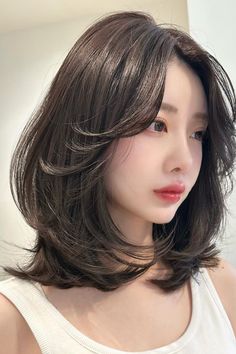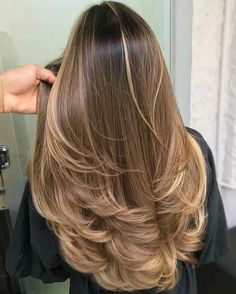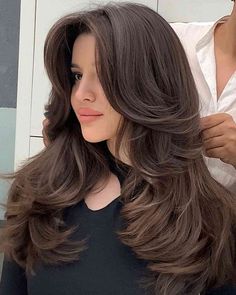Hair Cutting II
Welcome to “Exploring the Diversity of Hair Cutting Techniques,” where we dive into the world of hairstyling and uncover the myriad ways to transform hair into stunning works of art. Hair cutting is a versatile craft that encompasses a wide range of techniques, each tailored to achieve specific styles, textures, and effects. In this class, we’ll explore the various types of hair cutting techniques, from classic cuts to modern trends, empowering you to unleash your creativity and master the art of hairstyling.

Chapter 1: Understanding Hair Cutting Techniques
1.1 The Fundamentals of Hair Cutting: Hair cutting is more than just trimming hair; it’s about sculpting and shaping hair to enhance facial features, express individuality, and create a desired look. Whether it’s a simple trim or a dramatic transformation, mastering hair cutting techniques is essential for achieving salon-quality results.
1.2 The Importance of Technique: Technique is at the heart of successful hair cutting, as it determines the precision, texture, and overall aesthetic of the final result. By mastering a variety of cutting techniques, hairstylists can offer clients a diverse range of styles and cater to their individual preferences and needs.
Chapter 2: Classic Hair Cutting Techniques
2.1 The Bob: The bob is a timeless haircut characterized by its straight, chin-length silhouette and blunt ends. From the classic blunt bob to the angled lob, there are countless variations of this iconic style, making it a versatile choice for clients of all ages and hair types.
2.2 The Pixie Cut: The pixie cut is a short, cropped hairstyle that exudes confidence and style. With its edgy appeal and low-maintenance upkeep, the pixie cut is a popular choice for clients looking to make a bold statement and showcase their facial features.

2.3 The Layered Cut: Layered cuts are versatile and flattering, adding texture, volume, and movement to the hair. From soft, face-framing layers to dramatic, choppy layers, there are endless possibilities when it comes to creating a layered haircut that suits each client’s unique style and personality.
Chapter 3: Modern Hair Cutting Trends
3.1 The Shag: The shag is a retro-inspired haircut characterized by its layered, tousled texture and effortless cool. With its relaxed vibe and lived-in look, the shag has made a comeback in recent years, becoming a go-to style for clients seeking a modern, undone aesthetic.
3.2 The Undercut: The undercut is a bold and daring haircut that features shaved or closely cropped sides and longer hair on top. With its edgy appeal and versatile styling options, the undercut allows clients to express their individuality and experiment with different lengths and textures.
3.3 The Blunt Cut: The blunt cut is a sleek and sophisticated haircut characterized by its sharp, straight lines and minimal layering. From the classic blunt bob to long, blunt layers, this haircut offers a polished and contemporary look that never goes out of style.
Chapter 4: Specialized Hair Cutting Techniques
4.1 Texturizing: Texturizing techniques are used to add depth, dimension, and movement to the hair. From point cutting to razor cutting, texturizing allows hairstylists to create soft, blended edges and remove bulk for a more natural-looking finish.
4.2 Thinning: Thinning techniques are used to reduce volume and density in thick hair or create softer, more manageable layers. Thinning shears and razor blades are commonly used to remove excess weight and add texture to the hair, resulting in a lighter, more airy look.
4.3 Precision Cutting: Precision cutting techniques involve meticulous attention to detail and careful measurement to achieve precise, geometric shapes and angles. Whether it’s creating clean, straight lines or intricate patterns, precision cutting requires patience, skill, and precision to achieve flawless results.

Chapter 5: Personalizing Hair Cutting Techniques
5.1 Client Consultation: Effective communication is key in hair cutting, as it allows hairstylists to understand their clients’ needs, preferences, and lifestyle. By conducting thorough consultations and listening to their clients’ concerns and desires, hairstylists can tailor their cutting techniques to suit each individual’s unique hair type, face shape, and style.
5.2 Customization: No two clients are alike, which is why customization is essential in hair cutting. Whether it’s adjusting the length, adding layers, or incorporating fringe, hairstylists can personalize their cutting techniques to create bespoke looks that reflect each client’s personality and aesthetic.
Conclusion:
Congratulations on completing “Exploring the Diversity of Hair Cutting Techniques!” Armed with the knowledge, techniques, and inspiration gained from this class, you’re well-equipped to unleash your creativity and master the art of hairstyling. Whether you’re a seasoned professional or an aspiring hairstylist, may your passion for hair cutting continue to inspire innovation and excellence in all your future endeavors.

